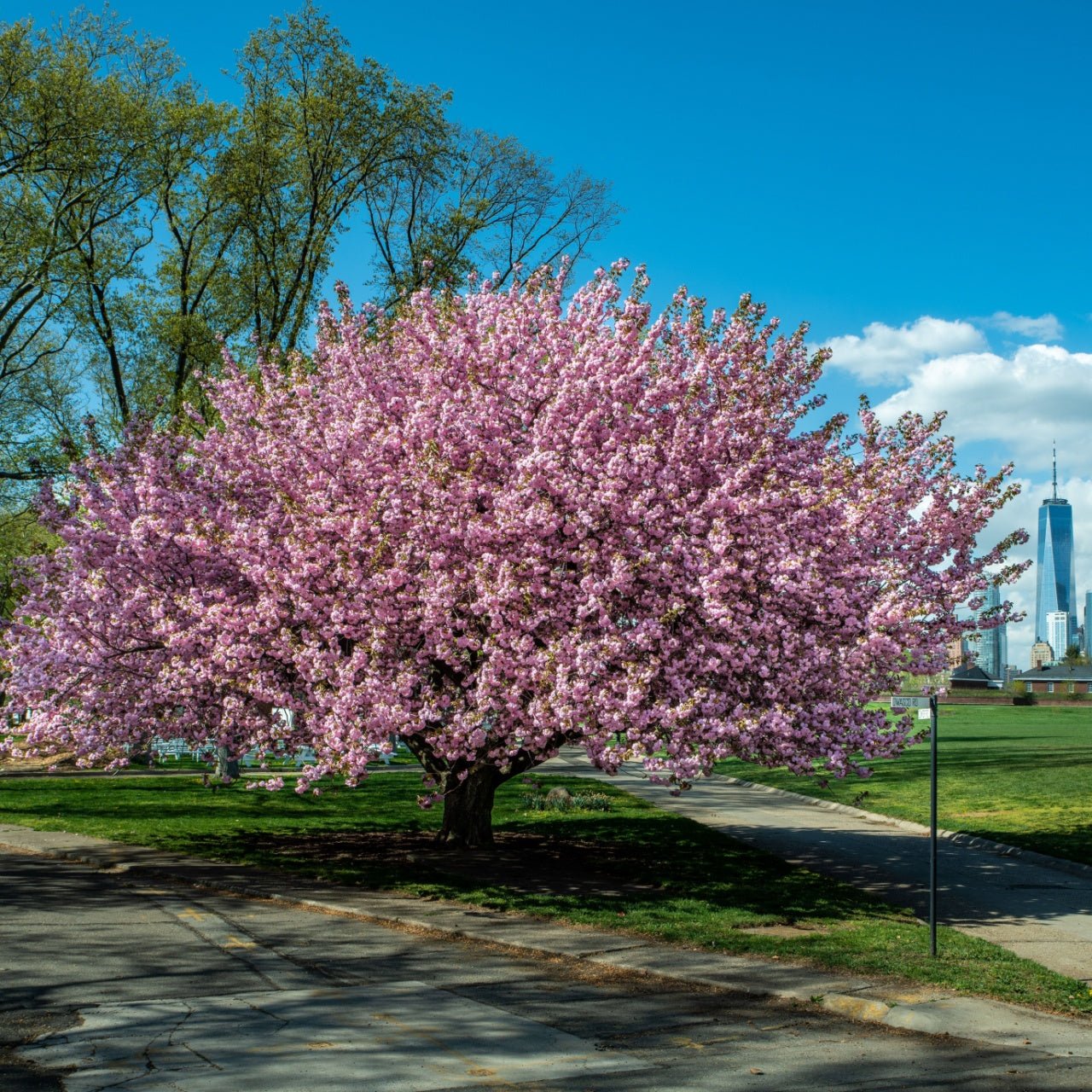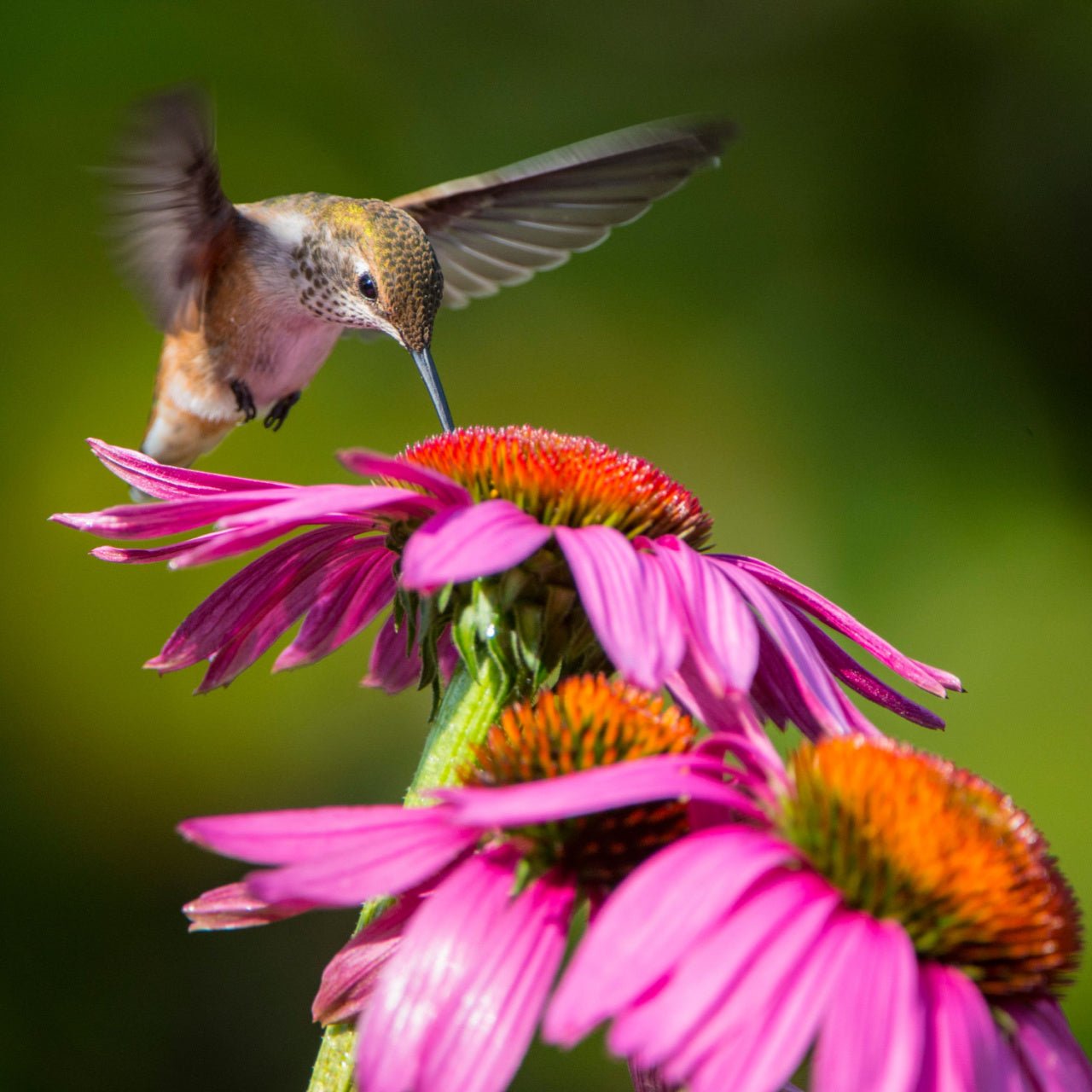
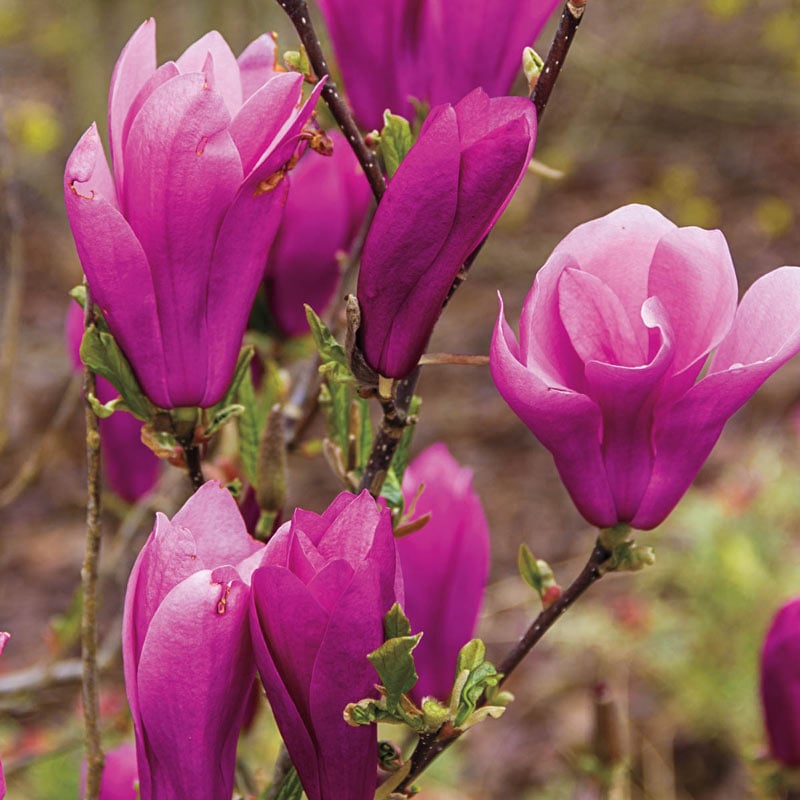

Magnolia Jane Tree 1 Gal. 2-3'
Stunning pink-purple spring blossoms
Cold hardy and resilient growth
Adds beauty to any landscape
Thrives in
ZONE 4ZONE 5ZONE 6ZONE 7ZONE 8This plant ships:
November 20251 Year Guarantee on all plants
Magnolia Jane Tree 1 Gal. 2-3'
The Magnolia Jane Tree 1 Gal. 2-3' is a beautiful hybrid cross of M. liliiflora ‘Nigra’ and M. stellata ‘Rosea’. It is a part of the Little Girl Series which includes hybrids named 'Ann', 'Betty', 'Jane', 'Judy', 'Pinkie', 'Randy', 'Ricki' and 'Susan'. The Little Girl Series was developed at the National Arboretum in the mid-1950s to flower later in the year aiming to reduce frost damage to newly forming flowers.
This hybrid shrub starts to bloom from mid-April or early May unfolding large purply pink flowers, reminiscent of tulips, that emit a delightful fragrance. The interior of the flowers is a white and the petals have a fleshy feel to them as with other magnolias. The flowers bloom before the leaves emerge creating a striking contrast of pinky purple blooms with bare silvery brown stems.
Plant Details - Magnolia Jane Tree 1 Gal. 2-3'
Family: Magnoliaceae
Hardiness Zones: 4 - 8
Light Requirement: Full sun to partial shade
Water Needs: Moderate
Height: 10 - 15 ft
Spread: 8 - 12 ft
Growth Rate: Moderate
Bloom Time: Mid to late spring
Wildlife Value: Pollinators, including bees, may visit flowers
It is compact, deciduous, and has an upright, multi-stemmed habit. The leaves of the Magnolia Jane Tree 1 Gal. 2-3' are a mild green color and ovate. They have a slight ruffle to their form and appear and feel rigid and somewhat dry. Depending on the environment, the trees will rebloom midsummer creating another combination of tulip-like flowers against a backdrop of vibrant green foliage. In the autumn, leaves will transition from bright green to golden yellow.
To showcase this shrub’s vibrant flowers, plant in as a specimen tree in the lawn or as a foundation plant close to your driveway or patio to enjoy its fragrance. It can also be planted at a woodland border to give a nice pop to the forest in the spring.
Landscape Uses and Maintenance - Magnolia Jane Tree 1 Gal. 2-3'
It is a slow grower and prefers well-drained and rich soils that are slightly acidic. It is tolerant of clay-heavy soils and cold weather. Make sure to plant in full sun locations for best flowering. In hot summer climates, apply a layer of mulch to the root area to help maintain moisture.
Establish in a location that is protected from strong winds, as the branches of this shrub can be prone to breakage. Choose a planting location for this plant wisely as transplanting later in life can be quite damaging to the root zone. It can be susceptible to scale and thrips, however in general this shrub is robust and easy to grow.
Noteworthy Characteristics
Showy flowers, easy to grow, fragrant
This sweet shrub is sure to brighten your garden and add a sweet aroma to the air. Shop for Magnolia Jane Tree 1 Gal. 2-3' shrubs online at TN Nursery. For 68 years, we have served the landscaping industry and homeowners with specimen plants.
This Is How Your Plants Will Look upon Delivery
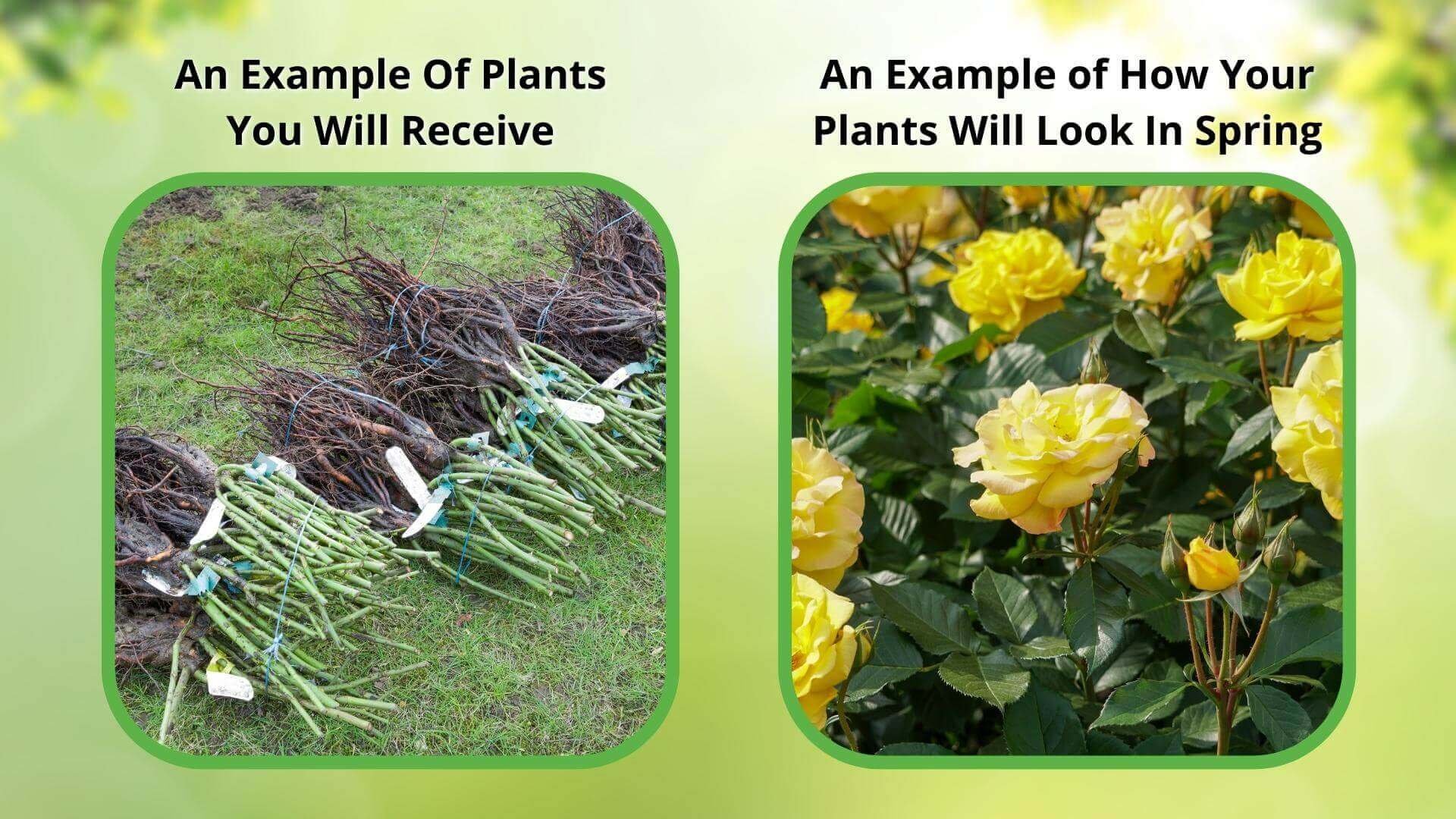
Bloom Season
Summer
Bloom/Foliage Color
Pink
Height at Maturity
Over 10 Feet
Care
Magnolia Jane Trees thrive in well-drained soil and benefit from regular watering, especially during dry periods. They should be pruned in late winter, mulch around the base for root protection, and fertilized in early spring for optimal growth.
Plant Reproduction
Magnolia Jane spreads via its roots and seeds for propagation
Plant bare root trees during the dormant season in early spring or late fall (November through April). Dig the hole twice as wide as the roots so the soil is well-drained. Position the tree so the root flare is at or just above ground level. Fill the hole back with the soil you dug from and water. Maintain soil moisture, especially in the tree's early years, by providing deep, regular watering. Apply a 2-4 inch mulch away from the trunk at the base to retain moisture and suppress weeds. Prune trees during the first few seasons to establish strength and resilience, remove damaged branches, and continue maintenance pruning as the tree matures. Regularly inspect for pests and diseases and apply integrated pest management practices. Protect young trees from mechanical damage and extreme temperatures with tree guards, and stake them if necessary for support, removing the stakes after one or two years.
Shipping date depends on the date displayed and chosen when you order from the product's page.
We only accept returns on plants verified dead. If you think your plants have died, we offer a 1 year warranty, please use this File a Claim Link to verify dead plants and start with return warranty process.




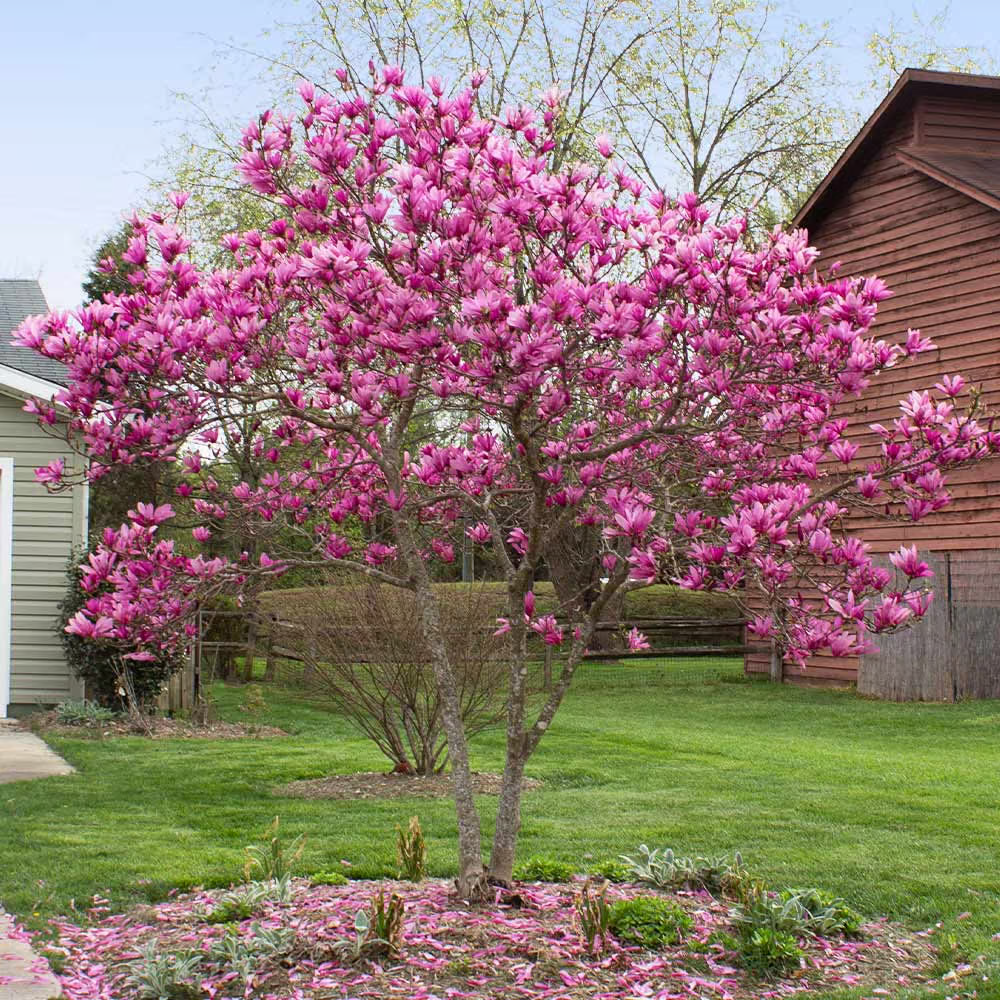
Striking Blossoms:
Produces beautiful pink and white flowers that stand out in any garden.
Pleasant Fragrance:
Emits a delightful, sweet scent from its blooms.
Low Maintenance:
Easy to care for with minimal pruning needed.
Seasonal Interest:
The Magnolia Jane Tree offers year-round appeal with its vibrant spring flowers and lush green foliage.
Caring Tips
How do I care for my Magnolia Jane Tree 1 Gal. 2-3'?
Each box contains detailed care instructions and information about your product. But here's the basics.
Care Tips
Magnolia Jane Trees thrive in well-drained soil and benefit from regular watering, especially during dry periods. They should be pruned in late winter, mulch around the base for root protection, and fertilized in early spring for optimal growth.
Light Requirements
The Magnolia Jane Tree thrives best in full sun to partial shade. It favors at least 4-6 hours of natural sunlight daily to ensure robust growth and vibrant blooms. Flowering may be reduced in shadier conditions.
Hardy Planting Zones
4 • 5 • 6 • 7 • 8
Header
Use this content to share information about your store and products.
Frequently Asked Questions
How often should I water my plants?
How do I know if my plant is getting too much or too little sunlight?
What should I do to prepare my plants for winter?
What are the signs that my plant needs fertilizing?
How can I prevent pests from damaging my plants?
How do I choose the right plant for my climate zone?




